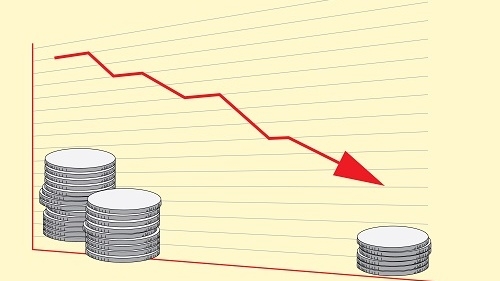
The Financial Markets Authority says over half of the KiwiSaver funds it is tracking had negative returns in the year to March.
The FMA’s online KiwiSaver tracker tool has been updated with the quarterly fund information for March 2020.
And the FMA says the latest information reflects "the volatility that hit markets in the first quarter of the year" as a result of the onset of the Covid-19 pandemic. (It is worth noting, of course that globally and locally stock markets have rallied strongly since March, so, many of these losses will have been reversed.)
"There are now around 270 KiwiSaver funds and, of those, 143 had negative returns for the year to end of March 2020," the FMA says.
It says funds in the higher risk ‘growth’ and ‘aggressive’ categories were hit hardest by the Covid-19 market falls: 92 of these funds went into negative territory, while 18 funds in this risk profile were positive for the year to March 2020.
In the ‘balanced’ fund category, 39 funds were negative for one year returns, while 16 funds were positive.
"As expected, the conservative and defensive funds were mostly positive, however 12 funds in these categories were negative over the one year period," the FMA says.
A total of 109 funds had positive returns after fees for the year to March.
Of these, however, 25 funds lost 50% or more of their gross return to fees.
"The FMA encourages members to look at the fees as well as the investment performance of their fund. Returns were strong and markets were rising up to February this year, so the amounts paid in fees could have been less noticeable," the FMA says.
The FMA tracker allows comparisons over both a five-year and one-year period. The five-year period shows that over 99% of funds were positive from April 2015 – March 2020. Comparing funds over a five year period provides a longer term perspective of investing though periods of volatility.
The tracker presents publicly disclosed data analysed by the FMA, to enable investors to see how much of their funds’ investment performance was absorbed by fees. There is a range of information taken from KiwiSaver providers’ quarterly fund updates, to help people compare and contrast different funds.
"It is expected that data for the next quarter, ending 30 June, will show the rebound that has happened in the markets, beginning in early April," the FMA says.
11 Comments
Just today received my annual KiwiSaver statement with a negative return and the audacity to charge me management fees !
One arrived in our household today.
Growth fund -1% (actually -1.6% with fees etc)
Audacity to include performance fees on top of management fees.
Checked mine (KiwiWealth Kiwisaver, CashPlus investment profile, 2.4% before fees, ish). Return of capital.....
Yet a month later (April and May) the returns are much higher. Such is the mistake of taking one point in time as your measure and not a longer view; say a 3 year view. I suspect the great majority of funds in the positive for March 2020 are cash or bond funds and don't hold naturally volatile shares. Long term is the measure......
Why not take it back to the start of kiwi saver to include GFC. That's the most realistic view of it
Contributive pension plans are basically a scam. The amount of money you could save plus accumulated interest will always be insignificant to live a proper retirement, just think you are saving current money to be used in maybe 30 years time, there's no way you can end up with a proper pension as the one you would be able to get with proper distributive pension systems. In the meantime someone else does have and use the money you have locked for years.
The main problem is the spending power of that final balance. It may sound great now but it will probably be worth a fraction of what it is now. Your better off just putting the money in a bank account and not touching it. The big problem of course is really only the not touching it. Kiwi saver was a waste of time for me the money was better spent paying off the mortgage it was an 8.6% guaranteed return.
What about the govt contributions for the first 1040 of member savings
That's a 50% return on investment if it's all you do. Doing that for my kids - in 20 years it probably won't be much, unless they start making their own contributions, but at least it will be something to make up for me not being able to help them get into a house.
And the criminal part is that pretty much all these accounts with negative returns were also charged performance fees on top as they are usually crystallised monthly.
Wait after a decade this has happened again.
KiwiSaver diversified funds experienced their first negative quarter since March 2009, with negative returns across all fund types for the three months to June, consulting and investment firm Mercer says.
Can we say the health threat has affected this? Does workers like me should be worried?
- Jack M.,painters hamilton nz

We welcome your comments below. If you are not already registered, please register to comment.
Remember we welcome robust, respectful and insightful debate. We don't welcome abusive or defamatory comments and will de-register those repeatedly making such comments. Our current comment policy is here.